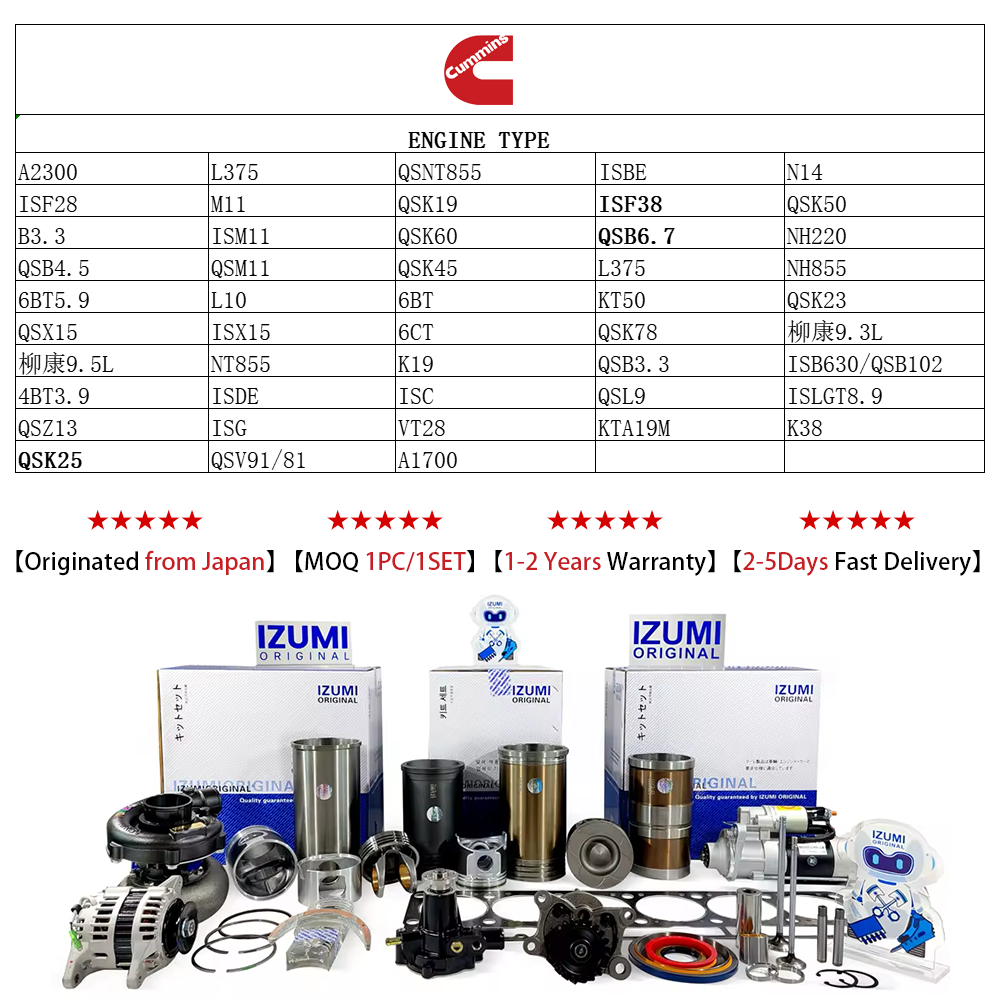Cummins Engine Parts: An In-Depth Analysis of the Power Core
When it comes to diesel engines, Cummins stands as a titan in the industry. Known for their innovative designs and high performance, Cummins engines are employed across various sectors, from transportation to agriculture. In this article, we’ll explore the critical components of Cummins engines, the benefits of using OEM and aftermarket parts, maintenance tips, and where to procure these essential parts.
Introduction to Cummins Engine Parts
Overview of Cummins Engines
Cummins engines are valued for their durability, efficiency, and high power output. These engines are designed for a wide range of applications, including trucks, farms, and industrial machinery. Cummins emphasises robust construction and employs advanced technologies to ensure prolonged engine life and optimal performance.
Importance of Quality Parts
When maintaining or repairing a Cummins engine, the quality of the parts used is paramount. High-quality parts ensure that the engine runs smoothly, reduces the risk of breakdowns, and extends the life of the vehicle or machinery. Using inferior parts can lead to inefficiency, increased fuel consumption, and ultimately costly repairs.
Types of Cummins Engines
Cummins produces a variety of engine models catering to different power requirements and application needs. Some prominent series include:
- B-Series: Compact and efficient, ideal for light-duty applications.
- QSB: Known for its reliability in tougher conditions, often used in marine and agricultural machinery.
- ISM and ISX: Designed for heavy-duty applications, these engines deliver powerful performance for larger vehicles.
Key Components of Cummins Engines
Understanding the core components of Cummins engines provides insight into their superior performance.
Engine Block
The engine block serves as the heart of the engine, housing several important components such as cylinders, pistons, and crankshafts. Made from high-strength materials, it is designed to withstand high temperatures and pressures during operation.
Pistons and Rings
Pistons convert the pressure of combustion into energy, whereas piston rings ensure a seal within the cylinder, preventing oil from leaking and maintaining efficiency in fuel combustion.
Cylinder Heads
The cylinder head is critical for housing the engine valves, spark plugs, and fuel injectors. It plays a vital role in the lifecycle of combustion in a diesel engine, impacting overall power output.
Fuel Injectors
These are responsible for delivering the precise amount of fuel directly into the combustion chamber. Accurate fuel injection is essential for maintaining optimal performance and minimizing emissions.
Gaskets and Seals
These components prevent oil and coolant leaks, ensuring a tight seal between engine parts. Quality gaskets and seals are crucial for maintaining pressure and temperature regulation within the engine.
Benefits of Using OEM and Aftermarket Parts
Understanding OEM vs Aftermarket
Choosing between OEM (Original Equipment Manufacturer) and aftermarket parts can make a significant difference in performance.
- OEM Parts: These are made by the original manufacturer, ensuring compatibility and quality but often at a higher price.
- Aftermarket Parts: Produced by third-party manufacturers, these parts can offer lower costs but may vary in quality and performance.
Choosing the Right Parts
Selecting the right parts depends on various factors including budget, performance requirements, and engine compatibility. It’s essential to consider warranty, supplier reputation, and product reviews (which can be insightful) when selecting between OEM and aftermarket parts.
Cost Considerations
While it may be tempting to go for cheaper alternatives, investing in higher-quality parts is often more economical in the long run. OEM parts may have a higher upfront cost, but their durability can save on maintenance costs over time.
Maintaining Your Cummins Engine
Regular Maintenance Schedules
Establishing a routine maintenance schedule is vital for any Cummins engine owner. Regular oil changes, filter replacements, and thorough inspections play a key role in preventing premature wear and tear.
Common Issues and Solutions
Routine checks can help mitigate many common problems such as oil leaks, overheating, and efficiency drops. Identifying symptoms early can lead to simple fixes rather than extensive repairs.
How Quality Parts Impact Performance
Using quality parts directly impacts engine performance, fuel efficiency, and longevity. Quality replacements ensure optimal functionality, preventing potential issues that could arise from inferior components.
Where to Buy Cummins Engine Parts
Trusted Suppliers and Retailers
When looking for Cummins engine parts, it's crucial to select reliable suppliers. Look for those who specialize in diesel engine parts and have robust inventories.
Online vs Physical Stores
While physical stores offer the benefit of immediate availability, online platforms provide the convenience of comparing prices, reading reviews, and checking stock before making a trip.
Shipping and Return Policies
Always check the supplier’s shipping and return policies to avoid complications. A reliable supplier should offer clear terms regarding returns and exchanges, especially if parts are incompatible or defective.
Conclusion
Cummins engines represent reliable performance across a range of industries. Understanding the components and their importance, coupled with the right maintenance strategies and quality parts procurement, can significantly enhance engine durability and efficiency. If you're looking to purchase parts for your Cummins engine, choose suppliers that prioritize quality and offer excellent customer support. By doing so, you'll ensure that your engine continues running at peak performance for years to come.


